Outdoor Cat Care In Winter: How To Keep Yours Safe
Most cats can safely spend time outdoors nearly all year long. But when temperatures drop, they're more likely to suffer from the cold - or even get lost. Here's how to keep them warm, safe & well-fed this winter.
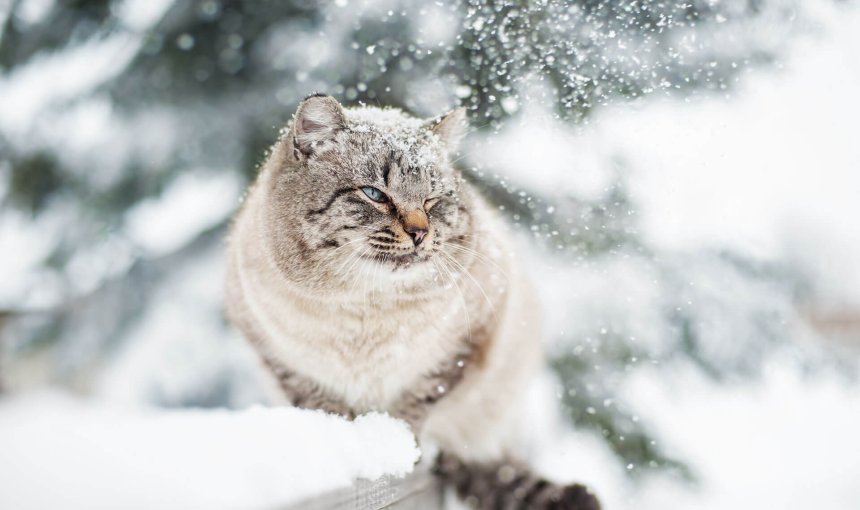
Outdoor cats are little troopers and adapt to all types of weather. But when the weather outside’s just frightful and we’re thinking outdoor cat care in winter, you’ll need a few tips to keep your feline friend safe.
Like, for example, with a dry shelter box, extra food…and a GPS tracker, in case they get lost when it’s cold outdoors and they’re out hunting or exploring.
In this post, we’ll cover everything you need to know about keeping your outdoor cat – or even feral or stray cats – warm and safe in the colder months. Let’s dive right in.
- Can cats survive winter outdoors?
- Why outdoor cats are more likely to get lost in cold weather
- What temperature can cats still survive outside?
- Building or buying a cat shelter: what’s best for outdoor cats?
- Provide plenty of warmed food and water
- Outdoor cat care in winter – with a GPS cat tracker
- Outdoor cats, stray cats & feral cats: what’s the difference?
- Stray cat winter safety tips
- How to get feral and stray cats to use your shelter and feeding station
- Protect your outdoor cat this winter with these tips
Can cats survive winter outdoors?
Firstly, yes – cats are resourceful and smart enough to survive cold temperatures outdoors. But even with their hunting instincts, they can still get lost during the snowy months.
Cats that spend the entire year going outdoors will grow a thick coat of fur as cold weather approaches. Your outdoor cat probably has strategies for staying warm and dry when outside in the winter, like:
- a secret nook to hide and stay out of the weather,
- a neighbor that leaves pet food outdoors,
- or a lucky spot for hunting rodents.
(It’s one reason you’ll find cats hiding around more often this cold season.)
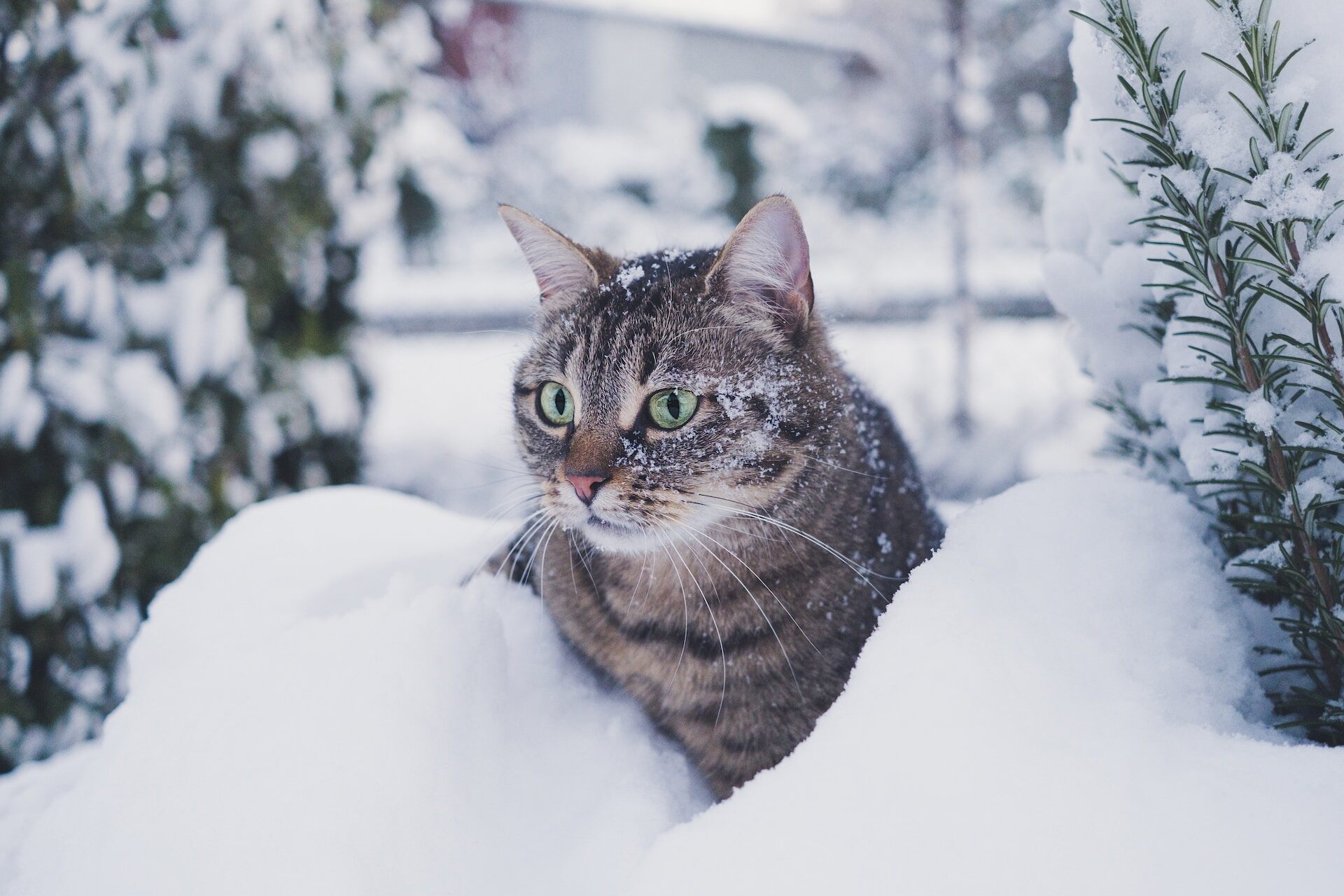
Surviving the winter outdoors is one thing – staying healthy and strong is another. You can help your outdoor cat survive the winter in better condition by providing a cat shelter, lots of food, and unfrozen water in very cold weather, which we’ll cover a little further below.
Why outdoor cats are more likely to get lost in cold weather
Another challenge that vets recommend for outdoor cat care in winter? Preventing them from getting lost.1
⚠️ Because much like dogs, cold weather can mess with your cat’s sense of smell.2 So it’s easy for them to lose their scent back home if they’re out patrolling their outdoor territory.
Besides, the holiday season might bring a ton of foot traffic to your house. So even your indoor cat is at risk for scampering outdoors with the constant doorbell ringing, opening, and closing.
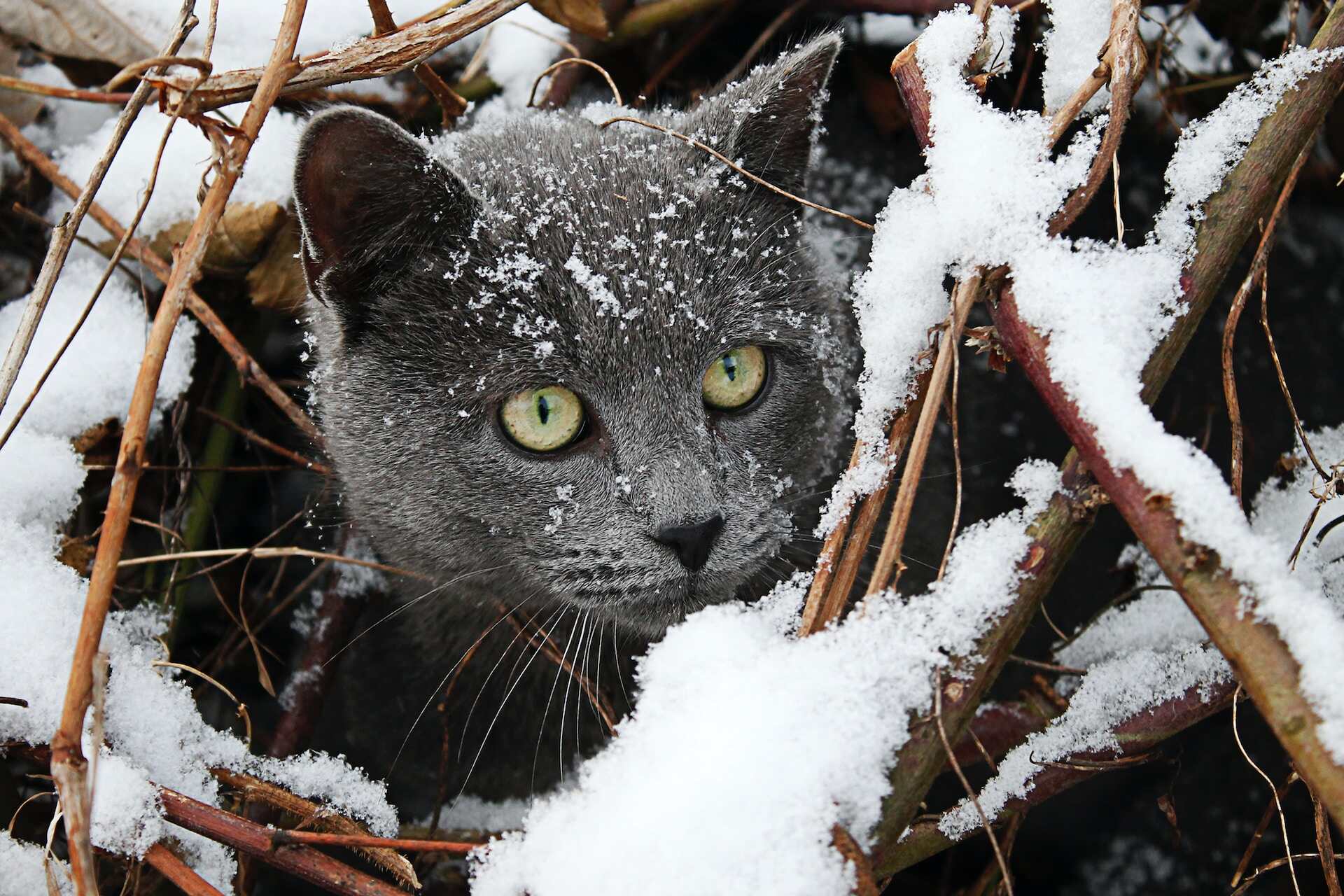
So we’d recommend keeping an eye on your door to see who’s visiting. Or consider investing in a dedicated cat GPS tracker which helps you follow your wandering cat’s movements in real-time.
So you never have to fear losing your cat when it’s cold outdoors again.
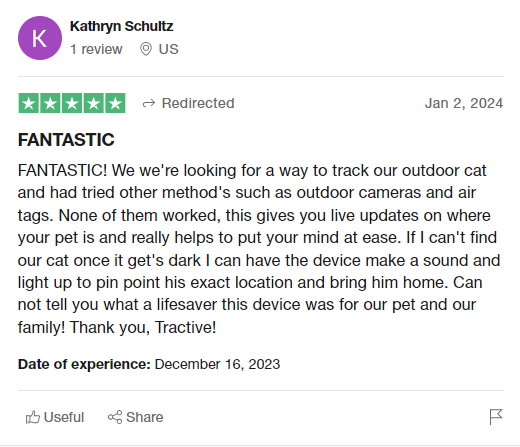
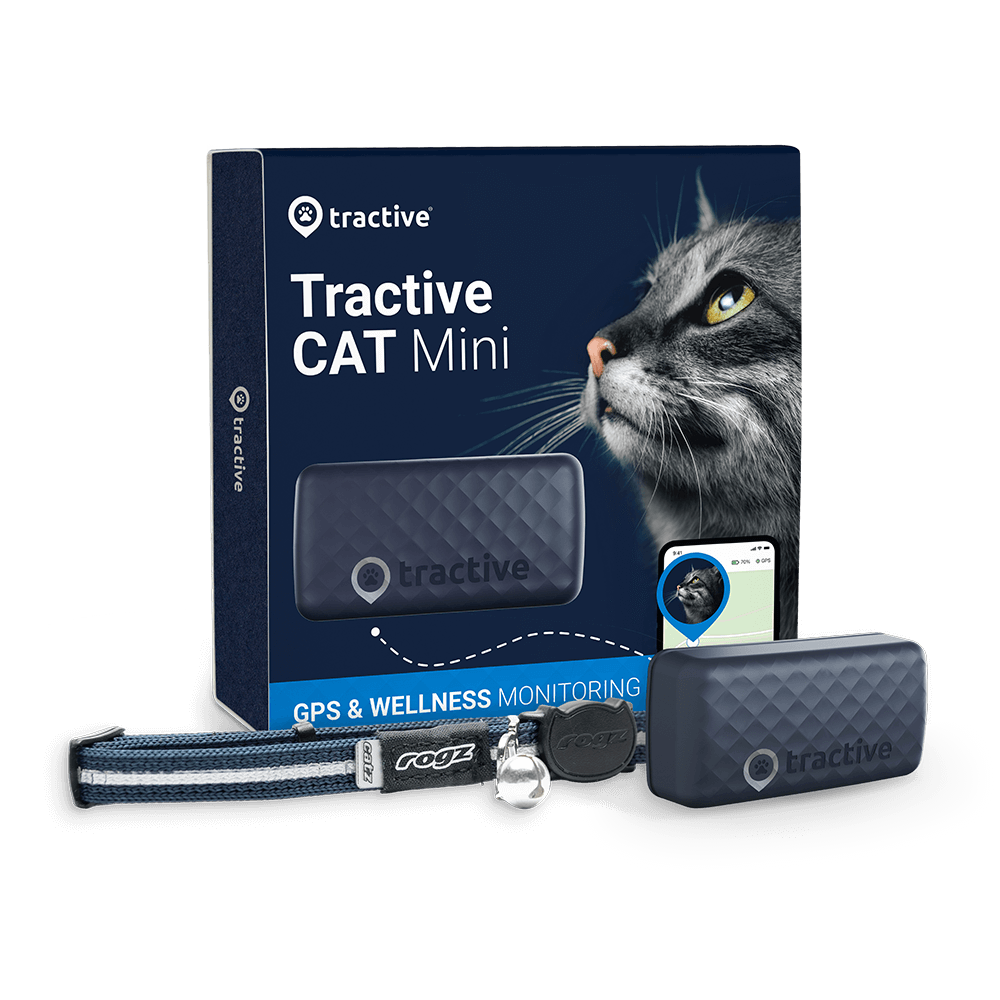
Know everywhere your cat goes
See where they are in real-time, no matter how far they go. Get alerts if they roam too far home. Find out where they’ve been and discover their favorite spots. Let others track with you.

“Tractive is my #1 recommendation when it comes to cat trackers. It’s specifically designed for tracking cats so you are sure that it is safe for your cats to use.”
– Clair Chesterman, Owner of CFA and CCA-registered cattery and fostering company, FluffyMeowPaws
What temperature can cats still survive outside?
Experts agree: outdoor temperatures under 32 degrees Fahrenheit (0 degrees Celsius) can pose a danger to cats. (Especially if they don’t have access to a suitable shelter.) When temperatures drop below freezing, cats can be at risk for hypothermia and frostbite, both of which are life-threatening conditions.
An indoor cat that goes outdoors only occasionally won’t be able to handle below-freezing temperatures for more than a few minutes. For cats that are primarily indoor cats, keep them inside when the thermometer falls below 45 degrees Fahrenheit (7 degrees Celsius) just to be on the safe side.
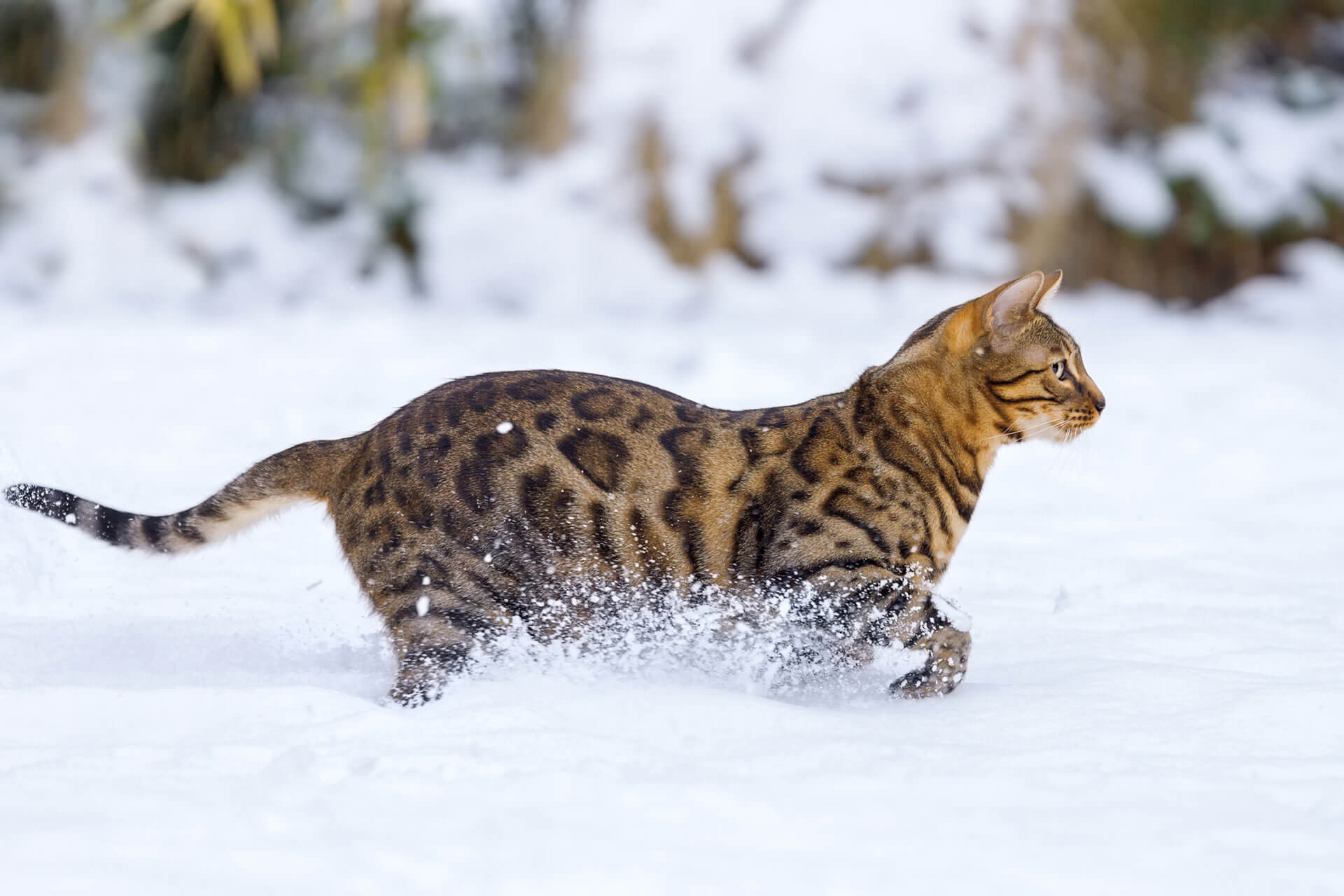
When to bring your cat inside
The best way to protect your cat from cold temperatures is to bring them inside. (Where they can stay warm and cozy with access to plenty of food, water, and snuggles.) For indoor cats, this should be no problem.
If you have an indoor/outdoor cat, try to bring them indoors at night when temperatures are the coldest. Be sure they have access to a shed, barn, or cat shelter to get out of the weather during the day.
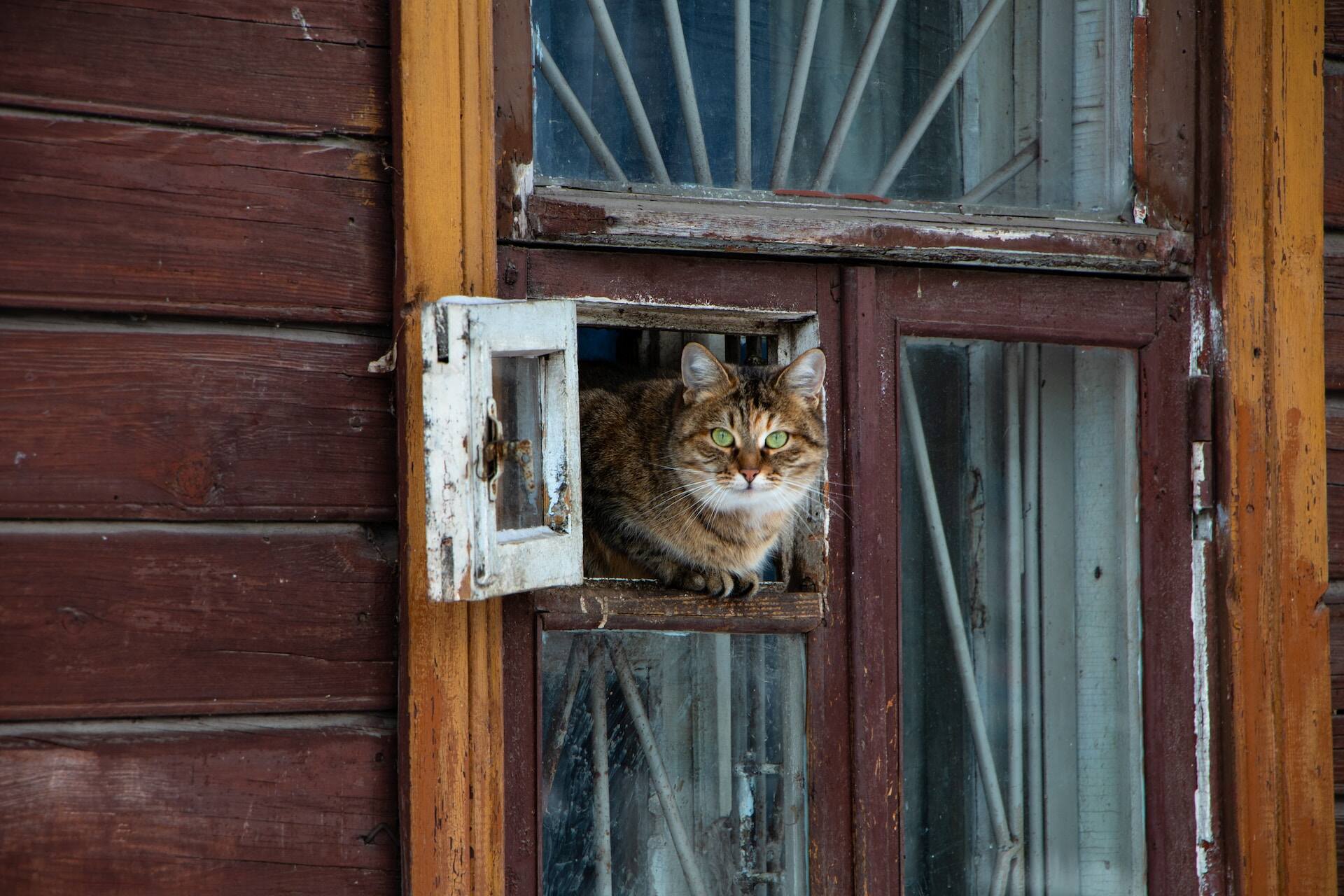
Why it makes sense to provide your cat shelter
If you care for a true outdoor cat or you support stray or feral cats, providing shelter is very important. (As well as offering unfrozen water and dry food.)
Why? Because many of the creatures that outdoor cats hunt, like mice and small animals, are hunkered down in the winter. So your outdoor cat’s natural food supply is limited in very cold weather.
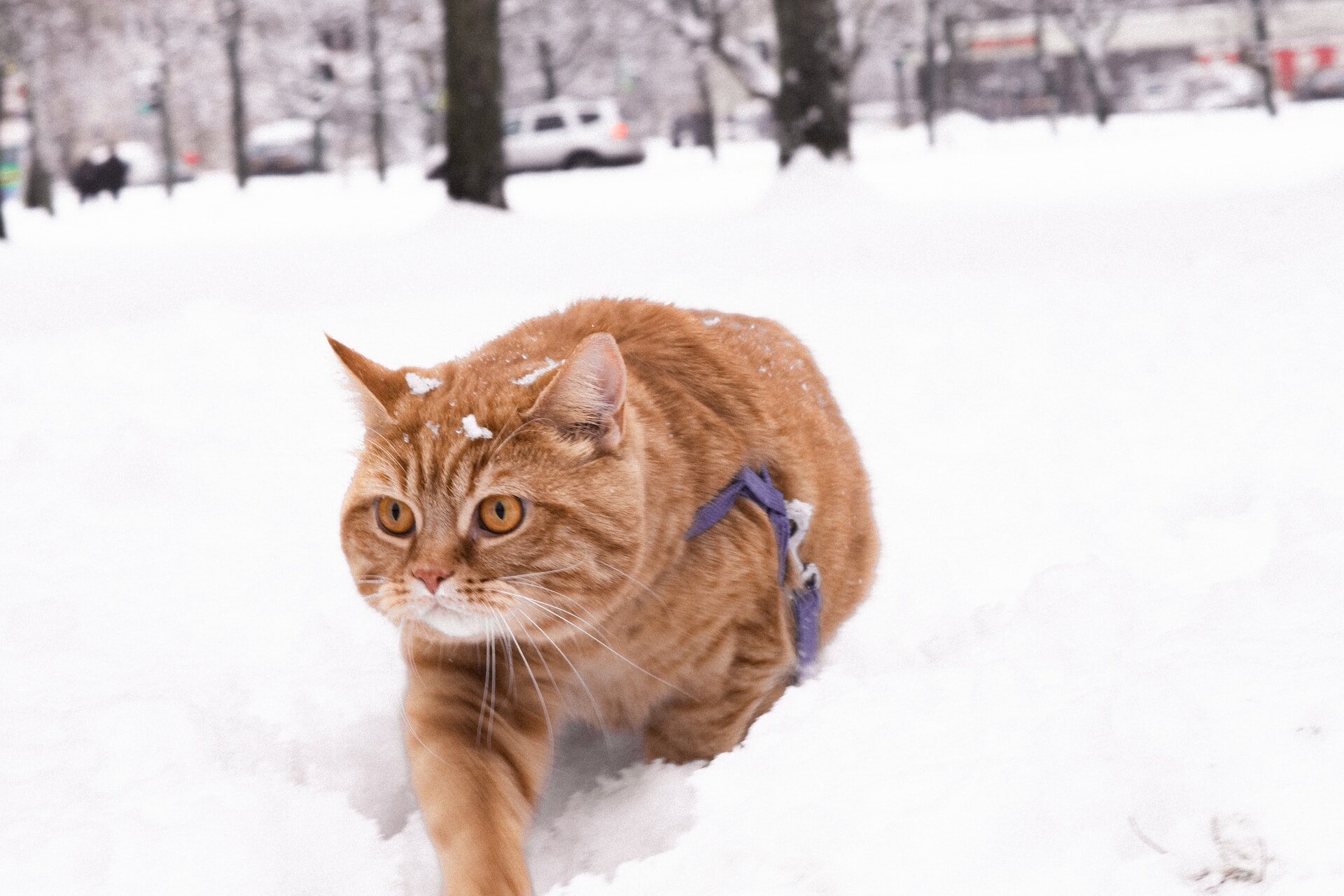
⚠️ This might even be one of the reasons your outdoor cat might end up running away. (Aka, chasing food.) If your outdoor cat spots an errant mouse or woodland animal they usually hunt, they might run off into the snowy outdoors to chase them down. Which might make it difficult for them to sniff their way back home.
Read more: Why Do Cats Run Away? 10 Reasons + How To Stop ‘Em
Bringing your cat indoors not an option? You can create a simple shelter box to keep kitty warm, safe, and dry all winter. Shelters are also a way to offer a warm retreat for stray or feral cats in your neighborhood during cold weather.
Building or buying a cat shelter: what’s best for outdoor cats?
You can build a permanent shelter out of wood, similar to a small doghouse, using plans that are available online. Or, you can buy a ready-made or easy-to-assemble cat shelter from a number of online retailers.
An outdoor cat seeking a warm hideout is not going to be fussy about the type of shelter you provide in winter. However, your neighbors might appreciate it if the shelter somewhat attractive, well camouflaged, or hidden in a wooded or brushy area.
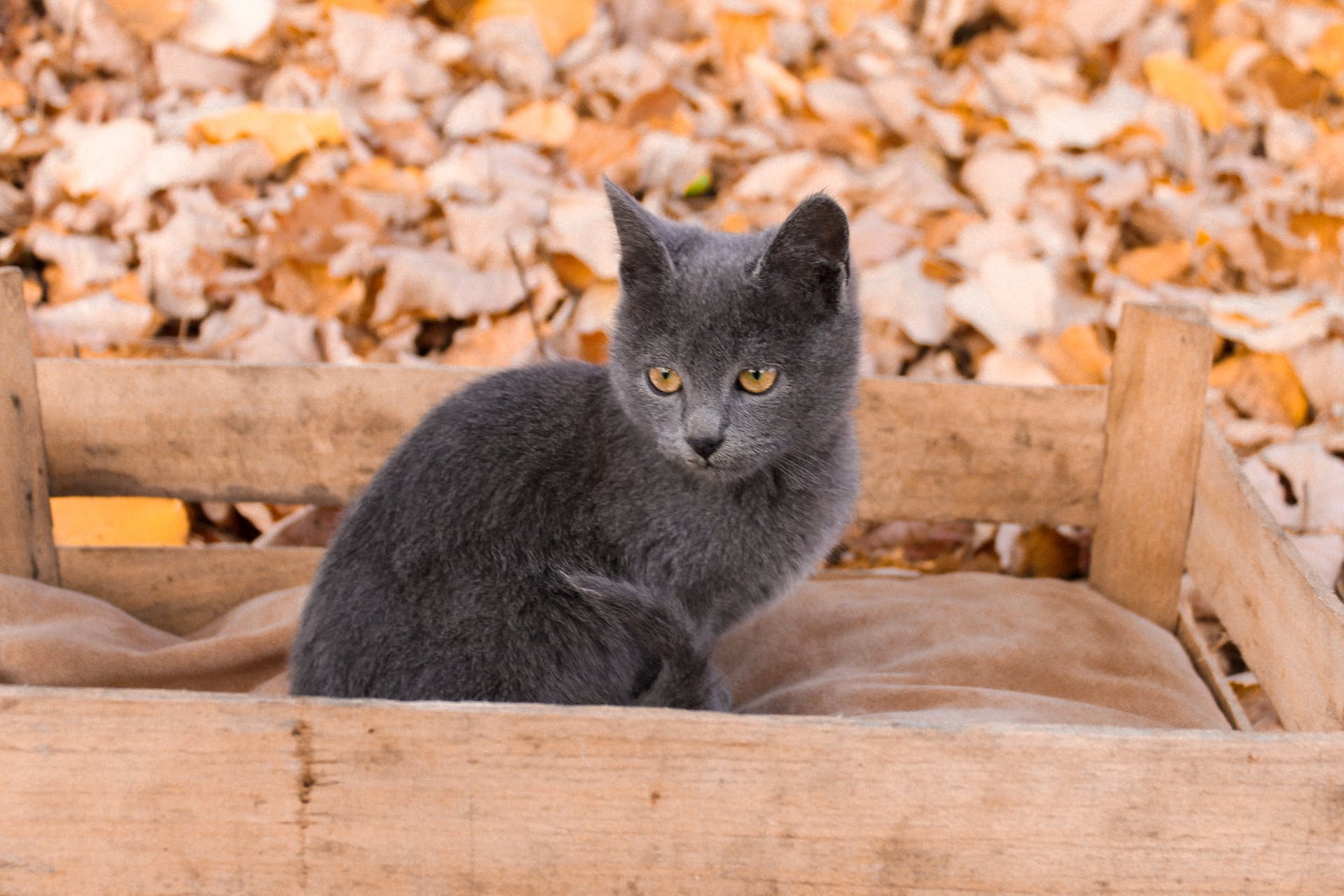
You can build a less expensive DIY cat shelter from a plastic storage tote. Use a box cutter to cut out front and rear openings that are about six to eight inches square – just big enough to let a cat squeeze in, but small enough to keep the cold air out. A rubber flap on the doors will further protect kitty from the cold. Just be sure the flap does not prevent the cat from easily entering and leaving the shelter box.
Why do you need a second door opening on the rear of the shelter box? If an unwanted intruder, like a raccoon, enters the shelter, the cat will have an escape hatch to make a quick exit.
Use duct tape or caulk to firmly attach the lid to the tote. Set the shelter box on a pallet, a few boards, or bricks to elevate it off the cold, damp ground. Raising the box a few inches will help to insulate it and keep rain or snow from seeping in through the doorway from the ground.
Read more: Build Your Own Heated Outdoor Cat House In 3 Easy Steps
Why size matters with cat shelters
Unless you plan to run an electric heater to your cat shelter, it’s important not to make the shelter too large. That’s because the only source of heat in the shelter is the cat itself.
- In a small shelter box, the cat’s body heat will warm the space quickly.
- If the shelter box is too large, the cat’s body heat will dissipate into the large space and the cat will not be able to stay as warm.
Just be sure the shelter box is big enough for the cat to stand up and turn around inside.
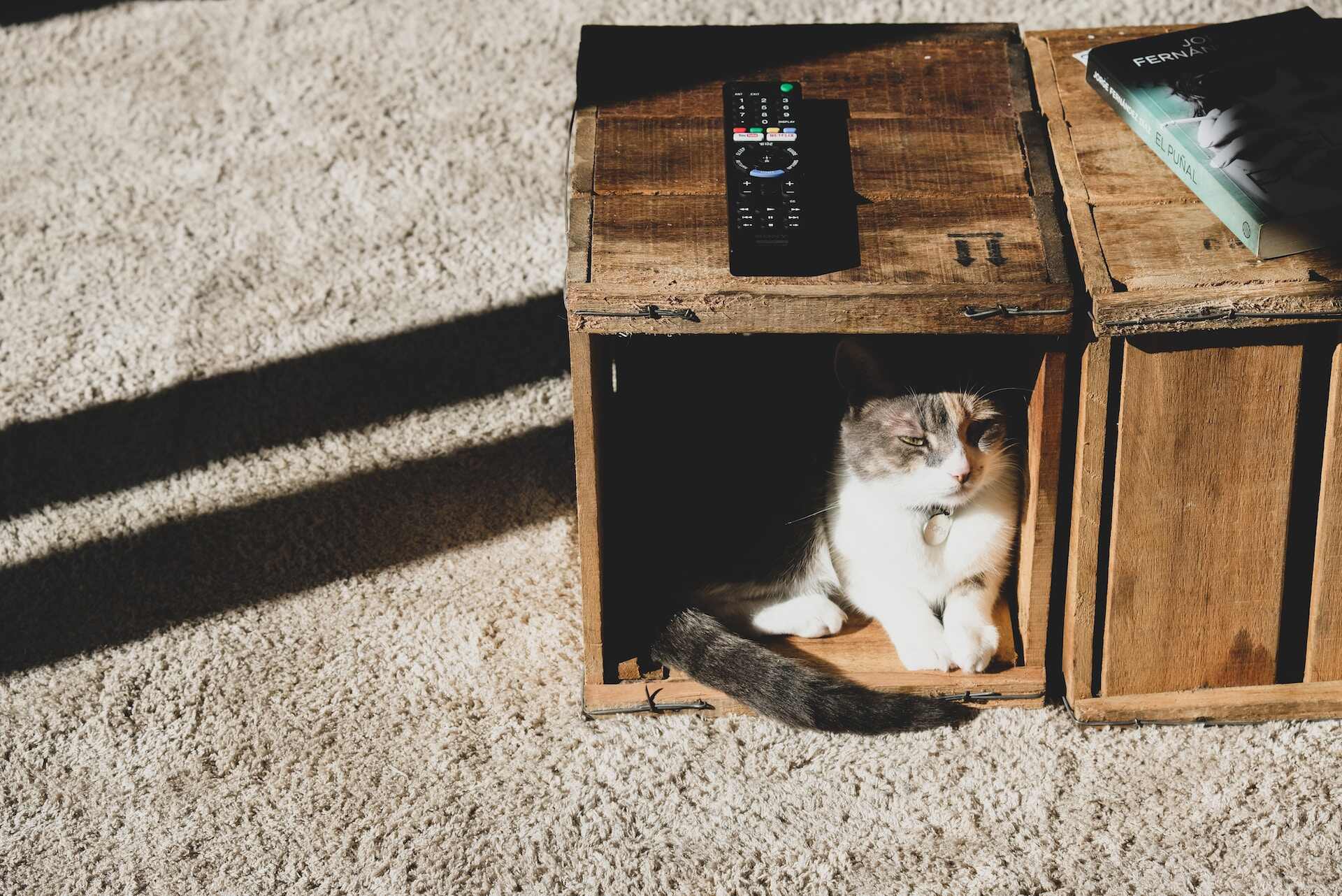
What to put in your outdoor cat shelter
The main job of the cat shelter box is to protect the cat from cold, rain, and snow. Do not put food in the cat shelter – place it in a covered feeding station instead. Food could attract unwanted visitors to the cat shelter and put your cat at risk.
Straw is the best material to lay on the floor of the shelter box. Straw repels moisture, is a good insulator, and cats can burrow into it to stay warm.
⚠️ Straw and hay are not the same – hay will get moldy and does not insulate as well as straw. Change out the straw periodically all winter.
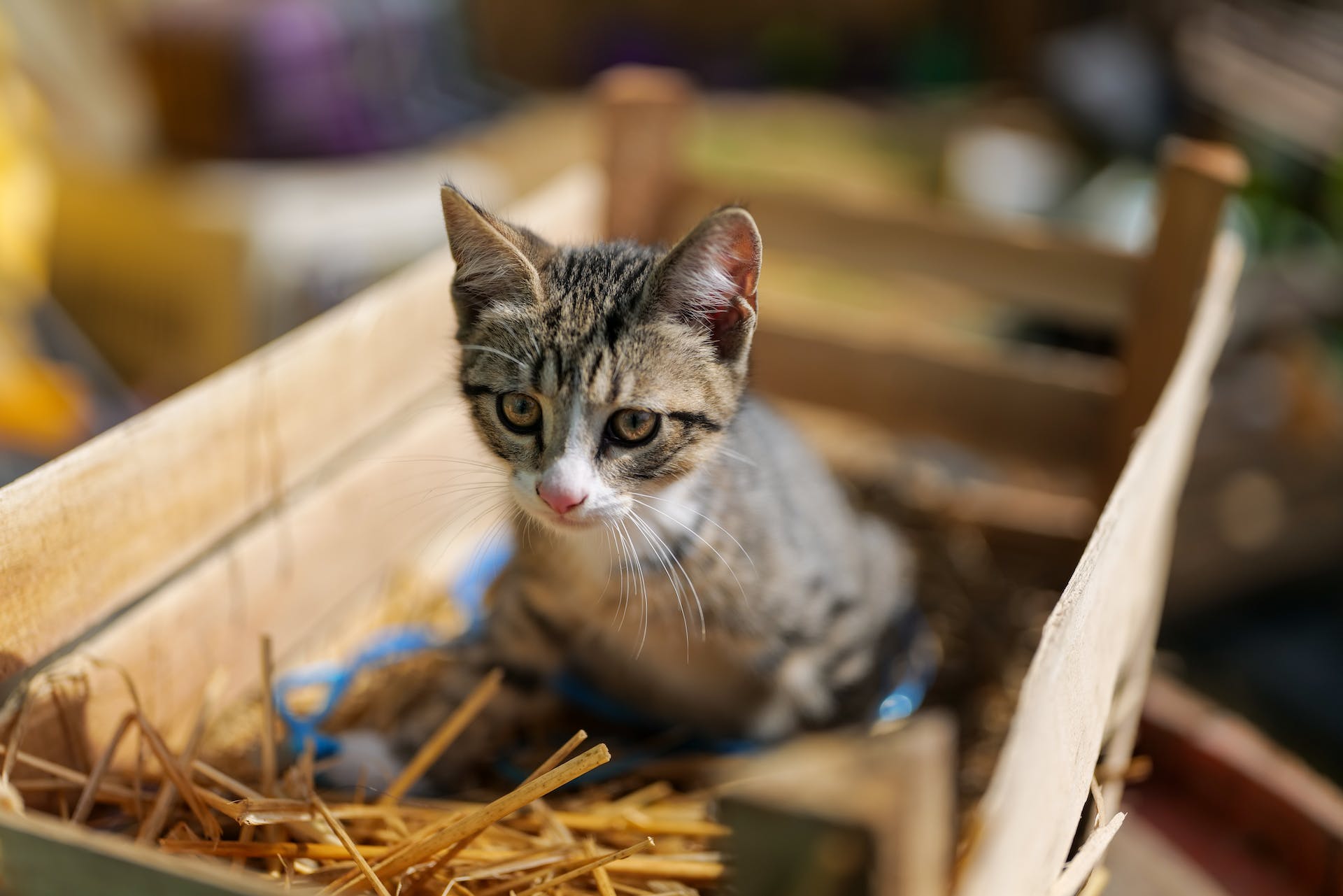
Insulate the shelter against moisture as well as cold
Don’t put towels or blankets in the shelter box. These will pull heat away from your cat rather than insulating them. Towels and blankets also hold moisture, which will create an unpleasant damp and chilly environment.
Seal all seams and openings of your shelter box to keep out rain and snow. You can use caulk or waterproof tape for this task. If the box’s lid won’t stay on, or the entire shelter is lightweight and could be easily tipped or blown over, put bricks or rocks on top of the shelter to hold everything in place.
Be sure to check the cat shelter right after a heavy rain or snowfall to make certain that the shelter’s interior is dry and moisture has not seeped in through the doorways.
Provide plenty of warmed food and water
In very cold weather, any food and water you leave out for your cat can freeze before it’s eaten. Unless you want to place fresh food and water outside for your cat several times a day, invest in heated bowls.
How much food should I give a cat in the winter?
Cats who spend most of their time outdoors in the winter need extra food. These cats expend extra energy to stay warm, so give them more food than you would in warmer weather.
Canned cat food freezes also quickly when it’s very cold outside. Consider offering dry kibble, and lots of it! Your cat will thank you.

⚠️ Remember, your cat’s regular prey are all probably hiding in their burrows for the winter and are unavailable. So if they’re used to hunting outdoors, they might venture out on their usual path – and then get lost on their way home.
Read more: Cat Hunting Behavior: Why Does My Cat Hunt?
Where to place food and water
Food and water should be placed where your cat spends their time outdoors. Because you will need put out fresh food and water daily, choose a spot that’s convenient for you, too. You want to avoid trudging through deep snow or mud if possible! A covered feeding station is a good option. This will keep rain and snow from falling onto the food, and make feeding time a little bit more comfortable for your kitty.
How to keep outdoor cats’ food and water from freezing
Heated bowls can keep water and canned cat food from freezing. These heated bowls plug into an electrical outlet, so consider how you will set this up outdoors to safely accommodate the plug and cord.
You may want to keep the heated food and water bowls on your porch. (As long as you are okay with stray critters possibly visiting so close to your home.)

If you use unheated bowls, note that water will typically freeze faster in stainless steel bowls than in plastic bowls. Some types of plastic bowls are flexible, so you can twist them to remove ice when the water has completely frozen over.
Outdoor cat care in winter – with a GPS cat tracker
Another essential tool for outdoor cat care in winter is a GPS tracker for cats. With it, you can see how long your cat has been out and how far they roam from home. While they are busy playing, you get peace of mind – that you’ll be able to find your fur-baby anywhere, anytime.
The story of Rickard & Louie
Here’s what one cat parent, Rickard, has to say about their experience with the Tractive GPS:
“We were starting to let our Louie go outside by himself. He was wearing a Tractive cat tracker to calm our minds. We could track him every day and see that he was moving further and further away from home each day he was outside. He always got home before nightfall, but some days we did need to go get him using the tracker to find him.
One evening we were starting to get worried – he had been in the same place for a few hours according to the tracker. It was starting to get dark so we finally went there to find him.“
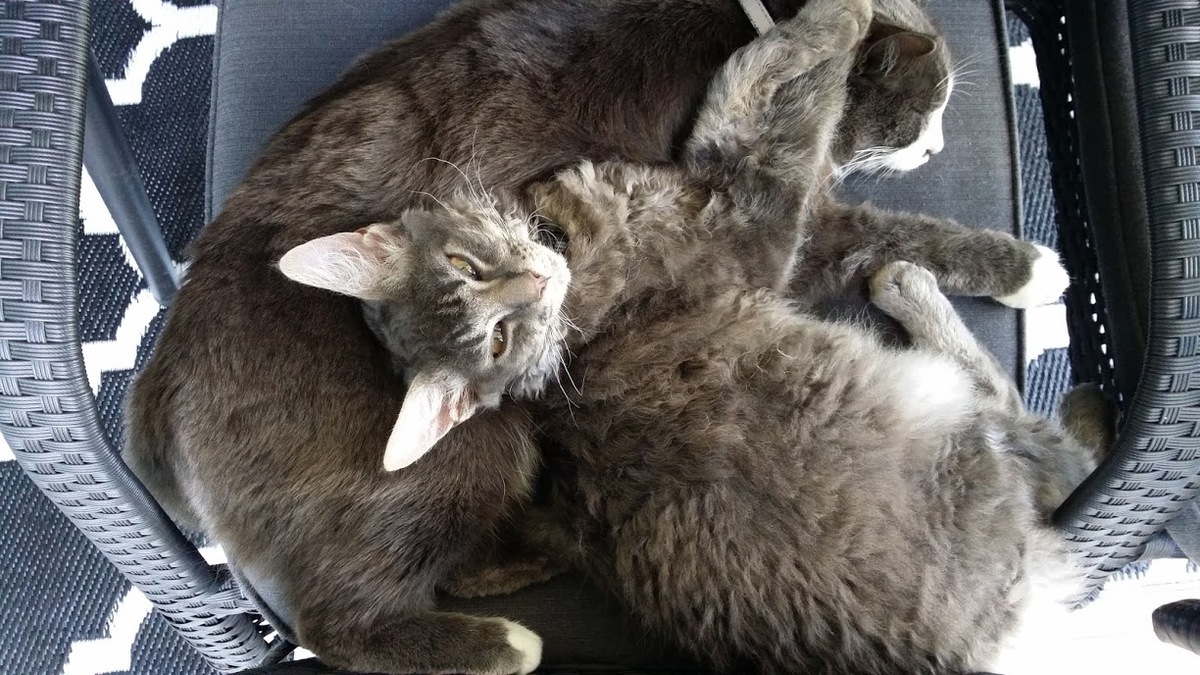
“The tracker took us to a place about a kilometer down the road. We searched the area but our Louie was not to be found.
Finally, we found Louie in the top of a tree in the very spot that the tracker had shown us. He was stuck in a tree about 6-7 meters above the ground and seemed to afraid to make a single noise.
Speaking to the land-owners, we found out that they had seen Louie earlier that day and that their German shepherd had chased him away. We borrowed a ladder from them and after some not so safe climbing we were finally able to get a hold of Louie and bring him home without any injuries.
The tracker has saved his life once and could do so again.“
A family of sick kittens in LA
Outdoor cats tend to have their “haunts” – or locations they frequently visit. (Like warm spots around your neighborhood – or where they’re more likely to find food.) So if you’re able to track these spots, it can help you find your outdoor cat that much quicker.
It’s how the Feral Cat Coalition in San Diego followed a sick mother cat’s movements to track down her litter of kittens. With a Tractive CAT Mini GPS tracker, they were able to track Mama cat’s movements with Tractive’s Location History – and rescue her kittens just in time.
Pictured here is Tractive’s Heat Map. Which shows you where your cat might wander most often.

It’s a simple way to identify their local haunts and favorite spots so you can pick them up quickly. Tractive’s Location History also helps you pick up what spots your pet might like to frequent.
Mama cat had dropped over each kitten to a different spot likely for safekeeping – which turned up quickly and easily on the Tractive Heat Map. Along with Tractive’s Location History, they helped the community rescue the family just in time.
And the best part? Location History works even in areas with poor network or cell connection.

“If you want to pinpoint your pet’s location or store their Location History, you don’t actually need a cellular connection. So once you’ve equipped your Tractive GPS, there’s no need to worry if your device loses coverage for a little while. Your tracker stores your pet’s positions securely. So you’ll be able to see where they’ve been even if you’re offline.”
– Ivelin Nenkov, Embedded Systems Engineer at Tractive since 2016
Outdoor cats, stray cats & feral cats: what’s the difference?
You may see all types of cats outdoors at any time of year. Some cat lovers go all out to support stray or feral cats – also known as community or neighborhood cats – with food, water, and shelter all year long. Whether cats are feral, stray, or outdoor cats, they are all domestic cats and members of the same species, Felis cattus.
At the same time, it’s important to recognize that stray or feral cats may have different levels of experience with humans, so you should not expect to interact with them. Also be aware that of you own an outdoor cat or a kitty that explores the outdoors for part of the day, your cat may encounter stray or feral cats while they are out exploring.
So with all that said, how are outdoor, stray, or feral cats different from one another?
Outdoor cats
Many outdoor cats are cared for by someone and they have regular human contact. For example, they may be fed regularly, receive veterinary care, and might go indoors for part of each day or night. Basically, these cats have a safe home base.
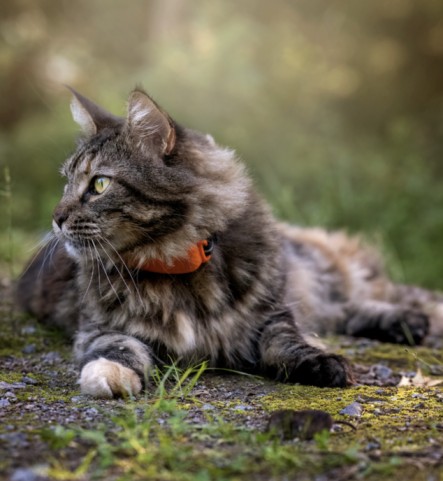
Outdoor cats often have a sizeable territory to patrol and defend. So while you might see them out wandering outdoors, it’s more likely they do have a home to return to.

“Tractive is the #1 cat GPS tracker in the industry. And it’s the highest quality cat tracker you can find. I was able to set the safe zone as my house area and once my cat gets outside I get an alert right away.
In fact, it probably saved my cat’s life that time she chased a bird and got lost. She was scared and I was able to find her with the help of the GPS tracker.
Tractive’s chip frequently calculates your cat’s location and is updated on the map every 2-3 seconds. Furthermore, the LED will help you guard your furry friend at night..”
– Clair Chesterman, Owner of CFA and CCA-registered cattery and fostering company, FluffyMeowPaws
Stray cats
Stray cats lived indoors at some point in their lives and had regular contact with people, but left their home or were abandoned. They no longer have regular contact with people.
Because of their past socialization, stray cats may approach people or houses in the daytime. They are more likely to accept food and find shelter near people.
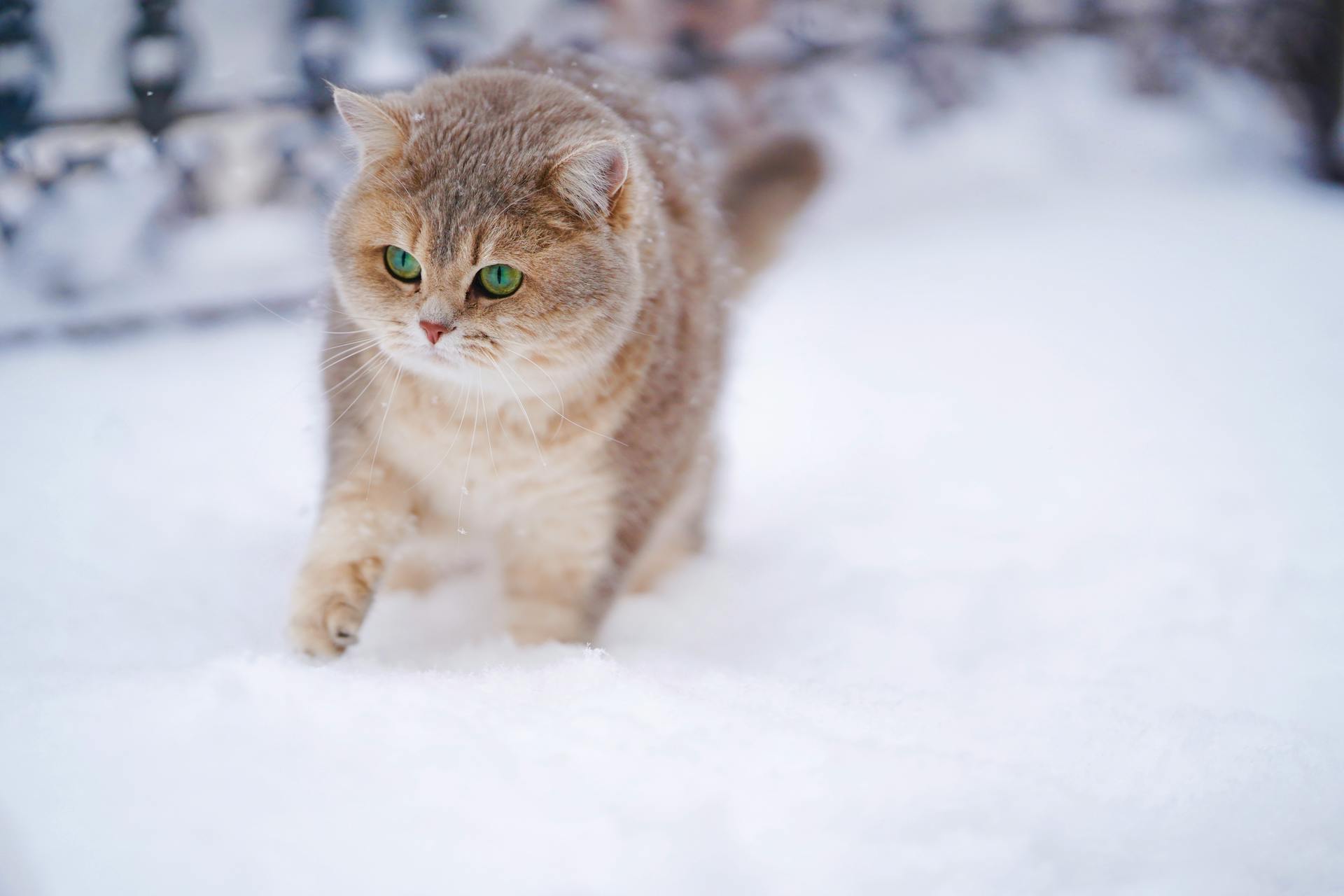
Not sure if a cat you’ve run into is an outdoors cat or a stray cat? First, look for an identifying marker – like a collar, ID tag, microchip, or even a pet tracking device. Or if your new feline friend resembles one you’ve seen on any lost cat flyers in your neighborhood. Take a photo of them and get in touch with your friends, family, and followers on social media to spread the word if anyone’s missing their cat.
Read more: How To Find A Lost Cat: All You Need To Know
Feral cats
Feral cats may never have had contact with humans, or if they did, it was minimal. More often than not, they’re afraid of people and don’t seek interaction with humans. They’re also usually active only at night.
Feral cats are often not neutered, so they are the targets of many community Trap-Neuter-Return (TNR) programs. These programs are designed to improve the lives of feral cats and prevent reproduction.
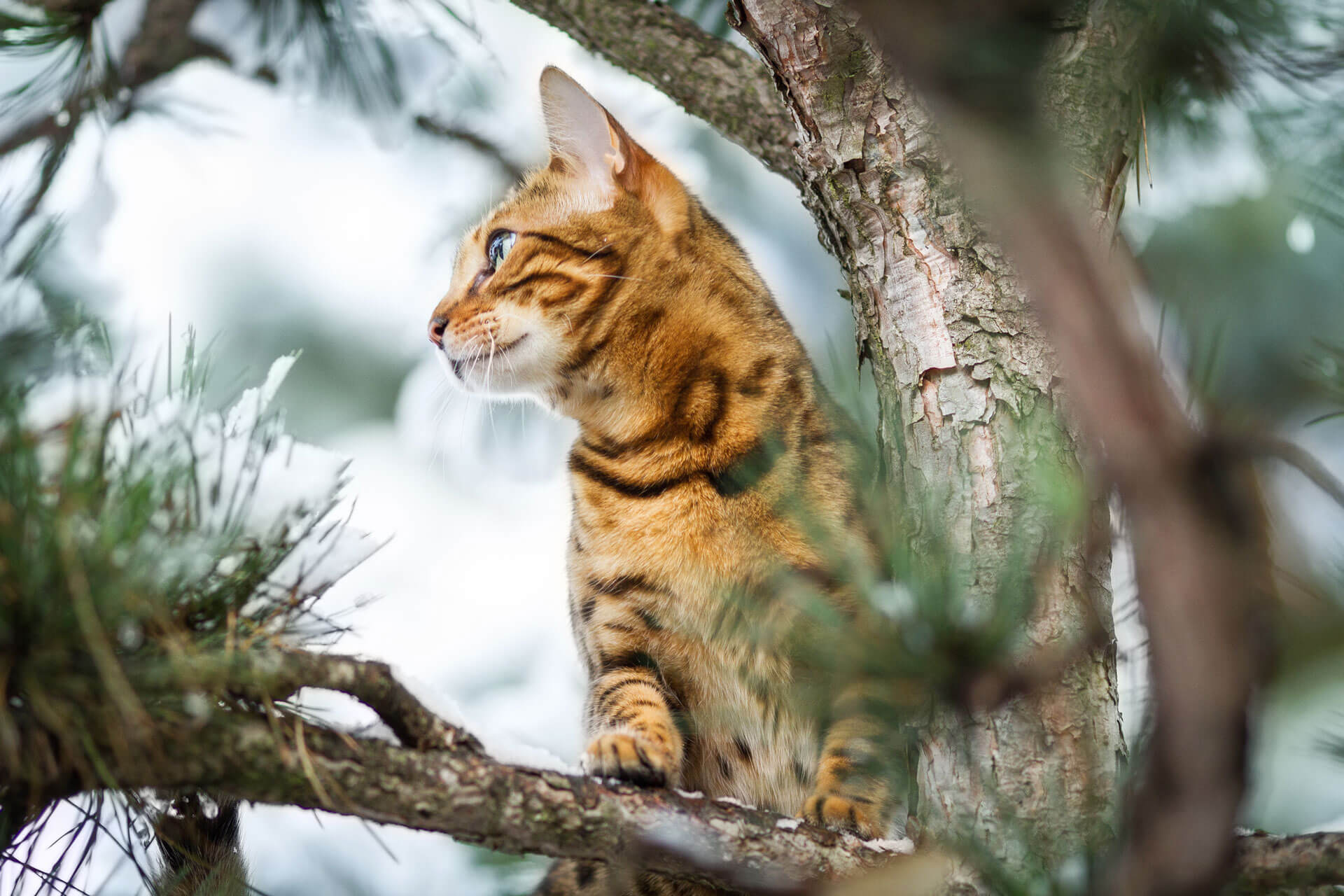
Any of these cats may be attracted to the kitty amenities that you place outdoors for your cat, including cat shelters, food, and water. Always be aware that roaming cats may have different personalities and levels of socialization.
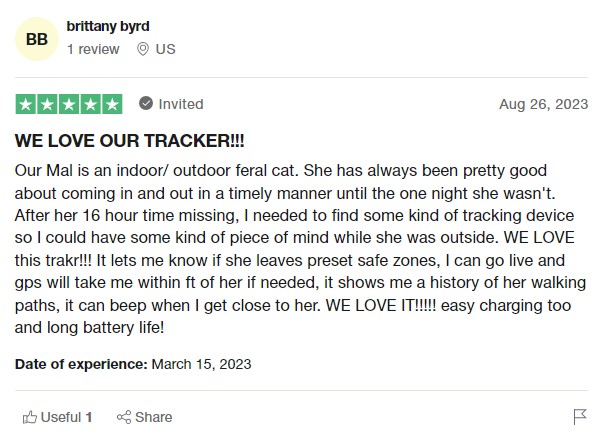
Stray cat winter safety tips
If you want to help stray cats that roam your neighborhood to make it safely through the winter, here are a few tips:
- Before entering your car, tap loudly on the hood to make sure a cat has not hidden under the car or in the engine compartment for warmth. Check the wheel wells, too, as these are common hiding places for kitties.
- Check that your car is not leaking antifreeze, which can be toxic if licked by cats when they clean their paws after walking through an antifreeze puddle. If you use antifreeze, keep it away from any places that cats have access to.
- Avoid using ice-melting chemicals on your driveway or other paved surfaces. These substances can be toxic if a cat walks through a treated area and later licks the chemicals off their paws.
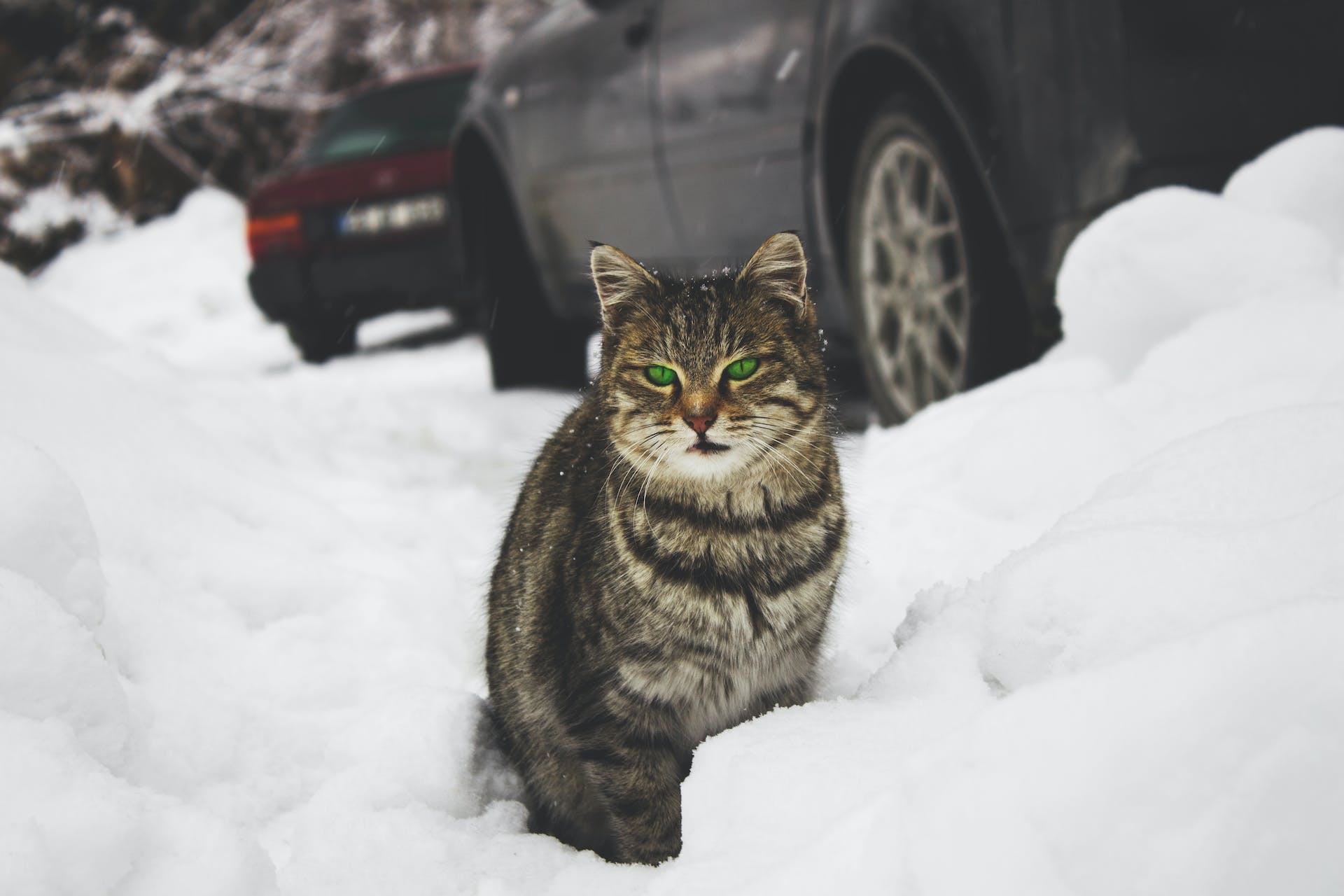
How to get feral and stray cats to use your shelter and feeding station
Stray and feral cats may be reluctant to approach your home or use the cat shelter you have created for them.
- Place cat shelters a short distance from your home, but not so far that you can’t check on them regularly.
- Set out more than one shelter box so the kitties can choose one to their liking, or get some privacy if other cats are using the shelter boxes.
- Entice the cats to enter your cat shelter box by sprinkling catnip or treats just outside the entrance. Catnip is perfectly safe for cats to sniff or even eat – besides other cat-friendly indoor houseplants.
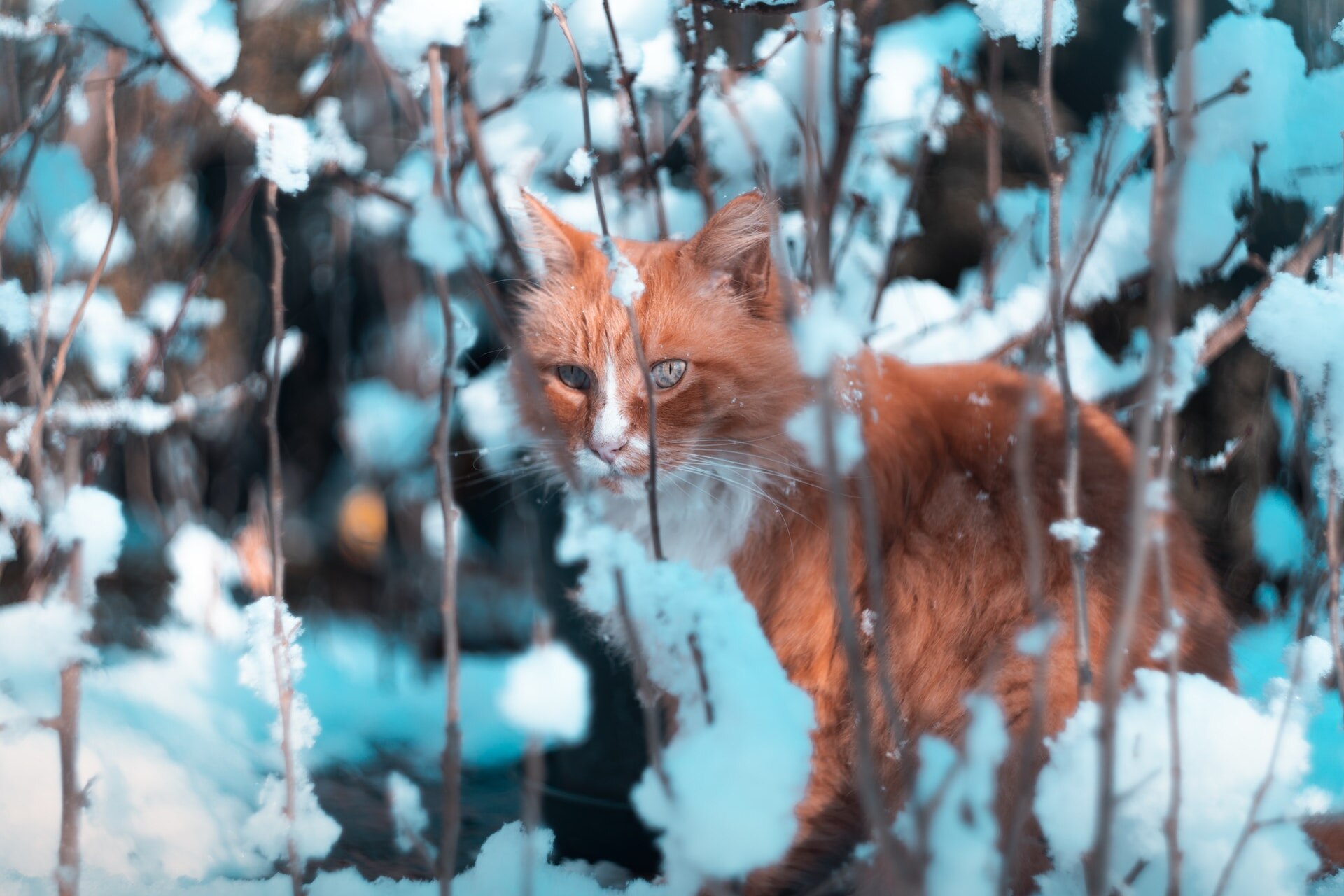
If cats refuse to use your shelter box, locate the area where they sleep – such as under a deck, or in a shed – and make that spot more comfortable by adding straw bedding that they can sleep on.
Protect your outdoor cat this winter with these tips
Living outdoors with the whims of nature can be challenging, even for the always-adaptable cat. You can help outdoor cats to successfully survive cold weather by:
- Keeping them indoors when temperatures drop below 45 degrees (or 7 degrees Celsius)
- Building them a shelter with plenty of straw filling and a covered feeding station
- Feeding your outdoor cat plenty – since their regular “prey” might be busy hibernating
- Use heated bowls to prevent food and water from freezing
- Watch out for feral and stray cats who might be attracted to any food you leave outdoors
And most importantly…
- Use a GPS tracker with a weight-adjustable safety collar to track your wandering cat in real-time and over an unlimited range.
With one, your outdoor cat can safely roam as far as they please – and with just a glance at your phone, you’ll always know where they are.
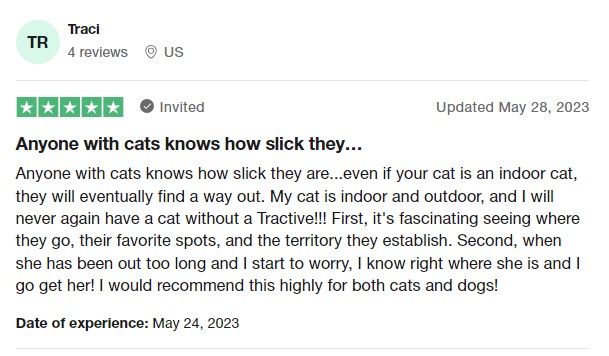
Curious where your outdoor cat likes to wander most? With Tractive’s Location History, you can get a picture of their favorite haunts. Here’s a video of it in action:
And if you’ve found this post helpful, share it with a friend or a loved one – and let’s help build a safer, kinder world for our furry friends together.




